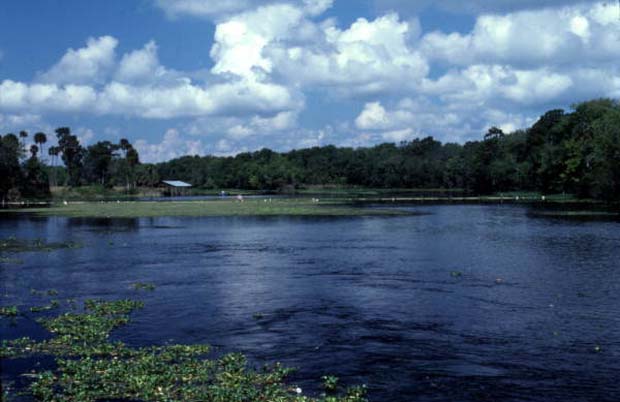By Peter Schorsch on May 30, 2013, SaintPetersBlog
[dropcap]T[/dropcap]he Florida Department of Environmental Protection will dedicate $6.5 million in the coming fiscal year to water quality improvements for the St. Johns River to build upon an ongoing restoration plan that has seen significant increases to water quality.

The St. Johns River is 310 miles long, three miles wide at widest point and drops 30-feet from headwaters to mouth. It is one of Florida’s major wetlands with a drainage basin of 8,840 square miles.
Included in the Department’s fiscal 2013/2014 budget is $3.5 million for hybrid wetland treatment technology in Deep Creek, which will reduce phosphorus and nitrogen draining into the St. Johns River. The Department expects to spend $3 million in the upcoming year as part of a partnership with the Florida Department of Agriculture and Consumer Services, the St. Johns River Water Management District, the University of Florida and the U.S. Department of Agriculture to improve water quality in the Tri-County Agricultural Area.
“Governor Scott, the Florida Legislature and Senator Thrasher should be commended for their continued commitment to water quality improvements in the St. Johns River and throughout Florida,” said DEP Secretary Herschel T. Vinyard, Jr., who toured the river Thursday. “The Department’s scientists will continue to get the best bang for the buck in order to make Florida’s water cleaner.”
The partnership and collaboration among stakeholders seeks to build on the success of the basin management action plan for the Lower St. Johns River that was adopted by the Department in October 2008 and targets total nitrogen and total phosphorus reductions. Overall in the freshwater reach, 93 percent of reductions needed to meet the total phosphorus goal and 90 percent of reductions to meet the total nitrogen goal have been reached. That equates to nearly 101,500 pounds per year of total phosphorus and 516,000 pounds per year of total nitrogen being removed from the river.
The hybrid wetland treatment technology is designed to treat used water with chemical additives that reduce phosphorus and nitrogen, the two key pollutants targeted by the Department’s restoration plan. Since 2007, six similar systems have been installed north of Lake Okeechobee. The technology is designed to last an estimated 50 years and be a cost effective system for reducing phosphorus and nitrogen, which can contribute to algal blooms.
Flagler, Putnam and St. Johns counties in Florida comprise the Tri-County Agriculture Area, which encompasses approximately 380,500 acres of predominantly cabbage, potato and sod farms within the Lower St. Johns River Basin. State and local agencies have partnered to develop and fund solutions that will improve farming techniques to reduce runoff into the river.
The Department has $3 million dedicated to spend as part of the partnership in this area of the state. To date, the Florida Department of Agriculture and Consumer Services and the St. Johns River Water Management District have committed $1.8 million to reduce nutrient loss to the St. Johns River, $1.1 million on projects and $680,000 on banding equipment that reduce fertilizer application amounts. USDA’s Natural Resource Conservation Service has committed $191,000 on projects in the area as well.
“The tour was a great opportunity to see the tri-county agricultural area and river with our scientists and partnering agencies. Protecting the river’s water quality is a team effort,” said Hans Tanzler, St. Johns River Water Management District Executive Director. “It will include the state agencies, local governments, the agricultural community and the public. We all contribute to the problem and we should all be part of the solution.”
The agencies’ scientists continue working together with farmers to identify and fund nutrient management and irrigation management projects to prevent nutrient movement into the river. Programs funded in partnership include upgrades to irrigation systems and fertilizer application equipment, are designed to improve the health of the river and help farms employ best management practices.

